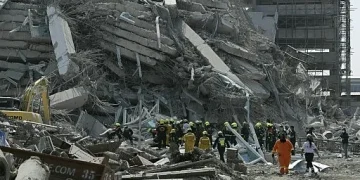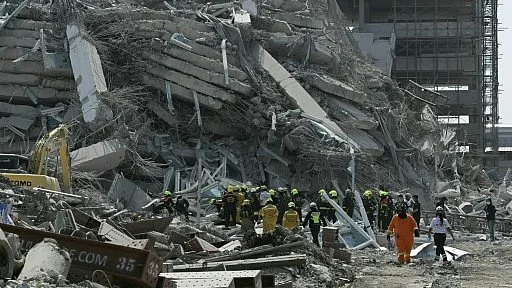By Eva Richardson | The Logistic News
April 17, 2025
In what is shaping up to be one of Southeast Asia’s deadliest natural disasters in recent memory, the 2025 Myanmar earthquake has claimed the lives of more than 3,000 people, with thousands more injured or displaced. The 7.4-magnitude quake struck the central region of the country on April 15, leveling entire communities, damaging key transport arteries, and overwhelming emergency services.
“We are in a race against time,” said Dr. Aung Min, director of Myanmar’s National Emergency Response Agency. “Remote areas remain inaccessible, and aftershocks are slowing recovery operations.”
International Aid Ramps Up
In response, humanitarian aid and rescue teams from over 20 countries have begun pouring into the region. The United Nations, the International Federation of Red Cross and Red Crescent Societies (IFRC), and multiple ASEAN emergency coordination teams have established logistics corridors to deliver tents, food, water purification units, and medical supplies.
Key contributors include:
-
India, which has dispatched two C-17 aircraft loaded with medical teams and emergency supplies
-
Japan, which is deploying a search-and-rescue contingent with drones and ground-penetrating sensors
-
The European Union, which has pledged €25 million in emergency relief through its Civil Protection Mechanism
“Myanmar’s humanitarian needs are immense. Logistics coordination is critical to ensure life-saving aid reaches where it’s most needed,” said Kristal Thomas, regional lead for humanitarian logistics at Médecins Sans Frontières.
Infrastructure Damage Hinders Relief
Severe damage to roads, rail lines, and airstrips has complicated efforts to reach remote villages, especially in mountainous zones where landslides have blocked access routes. Key bridges in Mandalay and Naypyidaw regions have collapsed, forcing aid organizations to rely on helicopters and river barges.
Several logistics operators and freight forwarders have joined the relief effort by offering warehouse space, cold chain storage, and last-mile transport in coordination with NGOs and government agencies.
“In disasters like this, the private logistics sector plays a life-saving role,” noted Javier Lemoine, Head of Emergency Logistics at Global Freight Alliance.
Global Supply Chain Impact
Beyond the immediate human cost, the earthquake has temporarily disrupted export flows of jade, garments, and agricultural products—sectors that are essential to Myanmar’s economy. The country’s largest port in Yangon remains operational but is experiencing delays due to labor shortages and customs backlogs.
Insurers and supply chain analysts are closely monitoring the situation, as multinational manufacturers with Tier 2 suppliers in Myanmar may face delays in textile and light electronics production in the weeks ahead.
Conclusion
As the death toll climbs and rescue efforts intensify, the world is mobilizing not only to save lives but also to rebuild infrastructure and supply chains. The logistics community stands at the heart of this emergency response, proving once again that when disaster strikes, coordination is as vital as compassion.
Eva Richardson is a senior correspondent at The Logistic News, specializing in humanitarian logistics, disaster response, and infrastructure resilience.























